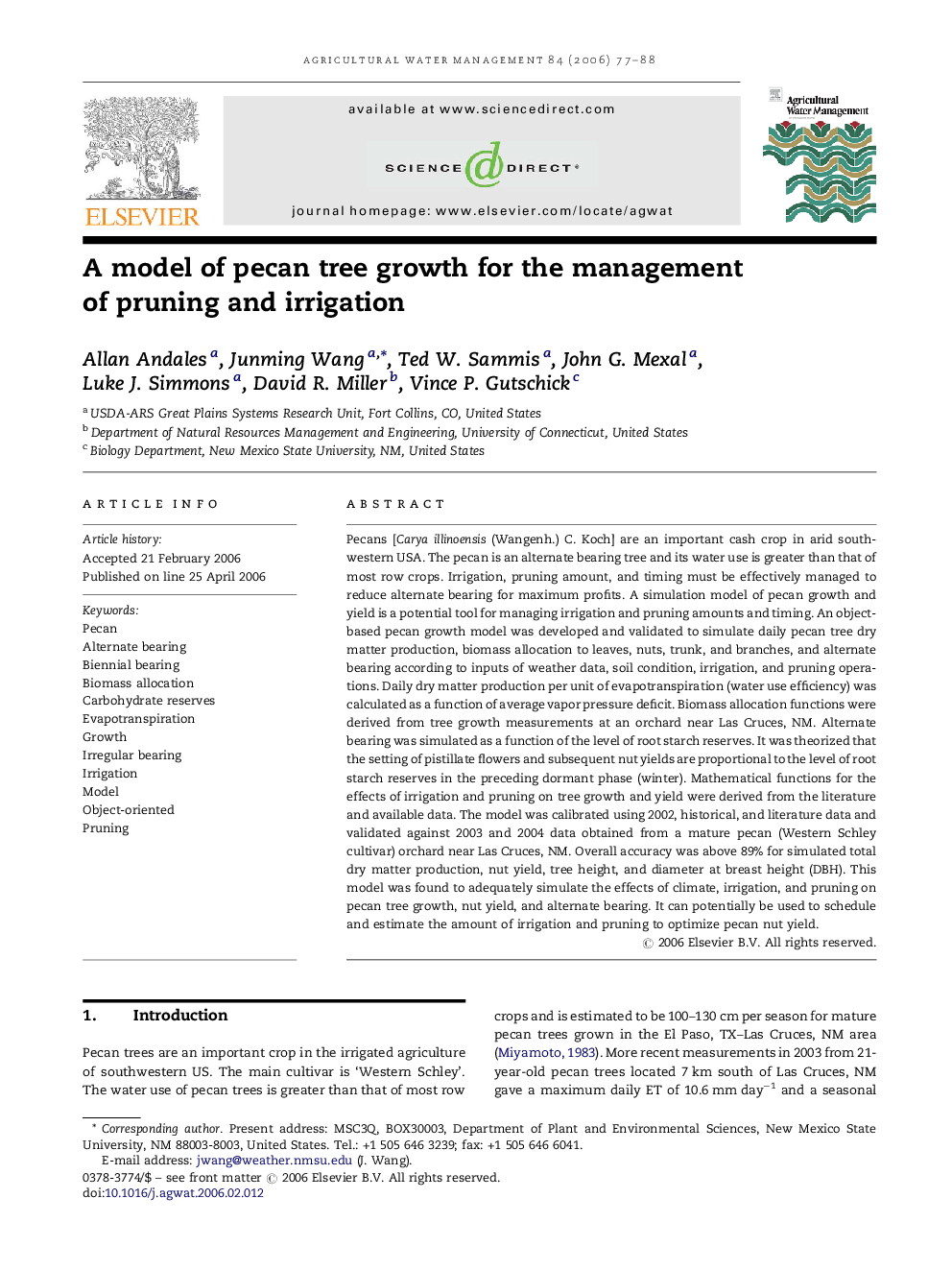| کد مقاله | کد نشریه | سال انتشار | مقاله انگلیسی | نسخه تمام متن |
|---|---|---|---|---|
| 4480588 | 1622988 | 2006 | 12 صفحه PDF | دانلود رایگان |

Pecans [Carya illinoensis (Wangenh.) C. Koch] are an important cash crop in arid southwestern USA. The pecan is an alternate bearing tree and its water use is greater than that of most row crops. Irrigation, pruning amount, and timing must be effectively managed to reduce alternate bearing for maximum profits. A simulation model of pecan growth and yield is a potential tool for managing irrigation and pruning amounts and timing. An object-based pecan growth model was developed and validated to simulate daily pecan tree dry matter production, biomass allocation to leaves, nuts, trunk, and branches, and alternate bearing according to inputs of weather data, soil condition, irrigation, and pruning operations. Daily dry matter production per unit of evapotranspiration (water use efficiency) was calculated as a function of average vapor pressure deficit. Biomass allocation functions were derived from tree growth measurements at an orchard near Las Cruces, NM. Alternate bearing was simulated as a function of the level of root starch reserves. It was theorized that the setting of pistillate flowers and subsequent nut yields are proportional to the level of root starch reserves in the preceding dormant phase (winter). Mathematical functions for the effects of irrigation and pruning on tree growth and yield were derived from the literature and available data. The model was calibrated using 2002, historical, and literature data and validated against 2003 and 2004 data obtained from a mature pecan (Western Schley cultivar) orchard near Las Cruces, NM. Overall accuracy was above 89% for simulated total dry matter production, nut yield, tree height, and diameter at breast height (DBH). This model was found to adequately simulate the effects of climate, irrigation, and pruning on pecan tree growth, nut yield, and alternate bearing. It can potentially be used to schedule and estimate the amount of irrigation and pruning to optimize pecan nut yield.
Journal: Agricultural Water Management - Volume 84, Issues 1–2, 16 July 2006, Pages 77–88